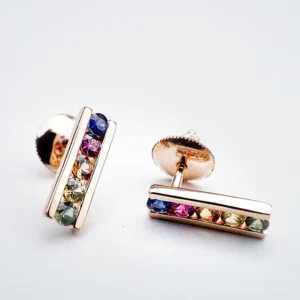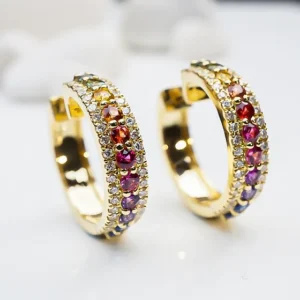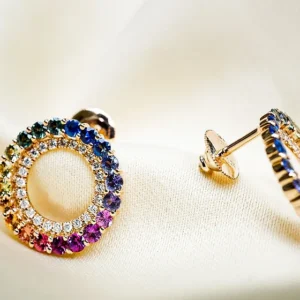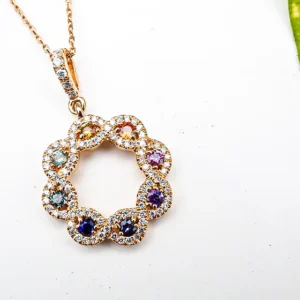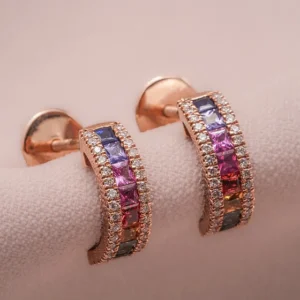The Allure of Diamond Carat: Unveiling the Mystique of Diamond Carat Weight
“Diamond carat” is a phrase that wields the power to unveil a gem’s weight, dimensions, and, ultimately, its intrinsic value. It’s the numerical representation of a diamond’s mass, with each carat equivalent to 200 milligrams.
Table of Contents
This unit of measurement traces its roots back to ancient times when carob tree seeds were used on balancing scales due to their uniformity in size. Gradually, these seeds were replaced with stones, giving birth to the standardized carat system in use today.
From the captivating allure of a 1 carat diamond to the awe-inspiring grandeur of the biggest diamond in the world, every diamond carat weight possesses an exceptional and unique charm. But the intrigue deepens as we consider the relationship between diamond carat and the price of diamonds, particularly for those in pursuit of larger stones.
The world of diamonds beckons us on a journey through various carat weights, including the elegance of a 2 carat diamond, the opulence of a 3 carat diamond, the majestic aura of a 4 carat diamond, and the pinnacle of luxury represented by a 5 carat diamond.
As we embark on this comprehensive guide, we will navigate the intricate realm of diamond carats, unveiling their inherent significance. Our exploration will also lead us through the intricate terrain of price variations and the profound impact that diamond carat weight exerts on the overall diamond experience.
Let’s delve into the interplay between diamond carat weight, quality, value, and diamond price per carat and decipher how each facet contributes to the enchantment of diamonds.
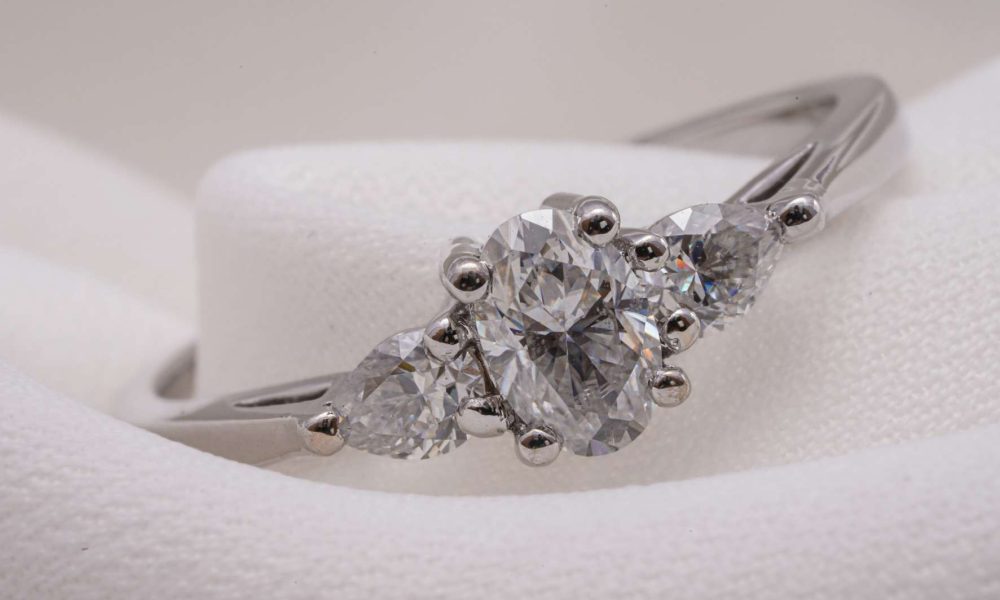
Captivating Oval Cut Diamond Ring
Understanding Diamond Carat: The Core of Size and Value
In the realm of diamonds, a single term reigns supreme – “carat.” This elemental unit of measurement acts as the master key to unlock a diamond’s weight. Specifically, a solitary carat corresponds to 200 milligrams, offering a standardized metric to gauge a diamond’s mass.
Interestingly, the genesis of this term harks back to an ancient practice of employing carob tree seeds as counterbalances due to their uniform size. Over time, this practice evolved, paving the way for gemstones to take the place of seeds, ultimately culminating in the establishment of the carat system utilized today.
However, the significance of the carat transcends its numerical value. While it does encapsulate a diamond’s weight, it also exerts a profound influence over the gem’s visual attributes and overall presence.
Diamonds boasting a carat weight of 1 and beyond, characterized by their considerable mass, inherently exude a mesmerizing aura that demands attention. These gems possess an almost magnetic allure, capturing gazes with their commanding magnificence.
Yet, it’s essential to acknowledge that diamond carat weight, although pivotal, represents just one facet of the renowned 4 Cs – a quartet that collectively delineates a diamond’s value and aesthetic enchantment. Alongside carat, diamonds are meticulously assessed based on their cut, color, and clarity.
Each of these factors contributes distinctively to the gem’s comprehensive worth and breathtaking splendor. This delicate interplay among the 4 Cs underscores a crucial truth: while diamond carat weight unquestionably entrances, it’s the symphonic fusion of these elements that authentically sculpts a diamond’s unparalleled radiance.
Understanding diamond carat is about more than numbers; it’s about finding a balance between size, quality, and emotional resonance. Whether a delicate 1 carat diamond or a grand 5 carat masterpiece, the journey to find the perfect diamond is a voyage through the spectrum of emotions, preferences, and aspirations.
Diamond carat is a reflection of a diamond’s weight, size, and worth. Its significance is embedded not only in the numerical measure but in the emotions and stories that diamonds carry. Each diamond carat weight unveils a different chapter, contributing to the enchanting narrative that each diamond weaves.
Diamond Price per Carat: Unraveling the Value Equation
Understanding Diamond Price per Carat
Diamond price per carat is a critical metric that delves into the intricate relationship between carat weight and a diamond’s overall cost. This metric is crucial in evaluating the value of diamonds across various sizes and clarifying the investment required for each carat weight.
Factors Influencing Diamond Price per Carat
Several factors contribute to the variation in diamond price per carat. Rarity plays a significant role – larger carat weights are rarer, leading to higher prices. Additionally, the diamond’s quality in terms of cut, color, and clarity profoundly impacts its per-carat price. A well-cut, clear, and colorless diamond will command a higher price per carat.
The Power of Scaling: Impact on Pricing
As carat weight increases, the diamond price per carat can rise exponentially. For instance, doubling the carat weight might lead to more than double the price per carat due to increased rarity and demand for larger stones.
This phenomenon underscores the captivating dynamics of the diamond market, where rarity and allure intersect with market forces, shaping the value of these exquisite gems.
Balancing Size and Quality in Pricing
The diamond price per carat strikes a delicate balance between the stone’s size and its quality. It’s essential to consider both aspects when making a purchase. A larger diamond with lower quality might have a lower price per carat but may not possess the same brilliance as a smaller, higher-quality diamond.
Navigating Your Decision
When considering diamond price per carat, it’s crucial to assess your priorities – whether size or quality holds more significance. Finding the right balance ensures that you make an informed decision that aligns with your preferences and budget.
In Summary of Diamond Price per Carat
Diamond price per carat offers insights into the value proposition of each gem, revealing the dynamic interplay between size, quality, rarity, and cost. By understanding this metric, you empower yourself to make a diamond purchase that resonates with your unique desires and requirements.
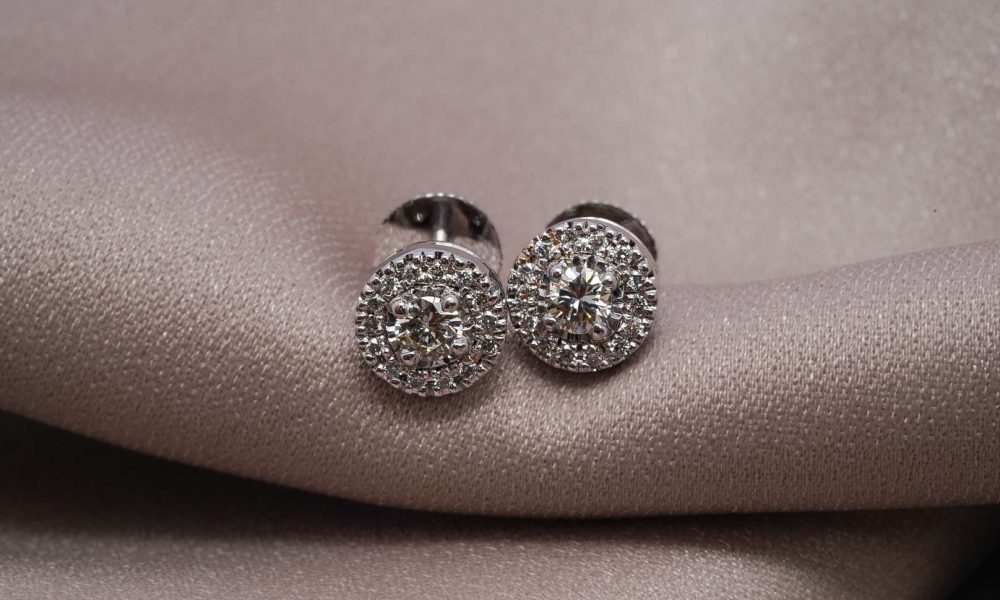
Diamond Carat Stud Earrings
Decoding Diamond Rings from 1 Carat Diamond to 5 Carat Diamond
1 Carat Diamond Ring: A Singular Expression of Love
A 1 carat diamond ring is far more than a piece of jewelry; it’s a singular and timeless expression of love and commitment. This weight embodies a delicate equilibrium, striking a harmonious balance between size and sophistication. The significance of a 1 carat diamond lies not only in its visual impact but also in the intricate blend of quality and sentiment it carries.
It symbolizes the beginning of a profound journey shared by two souls, encapsulating the promise of a future filled with love and unity. Whether chosen for an engagement or a cherished gift, a 1 carat diamond ring serves as a radiant reminder of the beautiful moments and enduring love that define our lives.
2 Carat Diamond Ring: An Emblem of Elegance and Grandeur
A 2 carat diamond ring stands as an emblem of elegance and grandeur, making an indelible statement of love and commitment. This weight category exudes a captivating blend of size and sophistication, offering a remarkable presence on the finger without venturing into the realm of extreme rarity.
The allure of a 2 carat diamond is not solely defined by its visual impact; it embodies the artistry of balance between quality and significance. Each facet of this gem reflects the commitment and depth of emotions shared by two individuals embarking on a shared journey.
Whether chosen for an engagement or as a symbol of a cherished bond, a 2 carat diamond ring radiates the essence of love and celebrates the grand moments that life has to offer.
3 Carat Diamond Ring: A Triumph of Luxury and Prestige
A 3 carat diamond ring represents a triumph of luxury and prestige in the realm of fine jewelry. It commands attention with its opulent size and resplendent beauty, making it a symbol of profound love and commitment. The allure of a 3 carat diamond lies in its rarity and the grandeur it effortlessly exudes.
This weight category transcends mere jewelry; it is an artistic masterpiece, a testament to the craftsmanship of nature and human skill. A 3 carat diamond ring signifies a love story of epic proportions, an enduring journey filled with moments of splendor and grace.
Whether chosen as an engagement ring or a meaningful gift, it is a timeless expression of love that captures the heart and soul.
4 Carat Diamond Ring: Majestic Aura and Unmatched Splendor
A 4 carat diamond ring boasts a majestic aura and an unmatched splendor that transcends mere jewelry; it becomes a work of art. This weight category is a testament to the rarest of finds, a gem that embodies luxury and extravagance. Its opulent size and resplendent beauty make it a symbol of profound love and commitment on an extraordinary scale.
A 4 carat diamond ring is not just a piece of jewelry; it’s an heirloom, a treasure that captures the essence of a love story filled with grandeur and distinction. Whether chosen for an engagement or a significant milestone, it stands as an enduring symbol of love and a celebration of life’s most magnificent moments.
5 Carat Diamond Ring: The Pinnacle of Opulence and Elegance
A 5 carat diamond ring stands as the pinnacle of opulence and elegance in the world of fine jewelry. It commands attention and admiration with its breathtaking size and unparalleled beauty, making a bold statement of enduring love and commitment.
The allure of a 5 carat diamond transcends the realm of ordinary jewelry; it is a masterpiece, a work of art crafted by nature and polished by skilled hands.
This weight category signifies a love story of immense significance, a journey marked by moments of sheer magnificence and grace. Whether chosen for an engagement or as a symbol of a cherished bond, a 5 carat diamond ring radiates the essence of love and captures the heart with its sheer, unparalleled brilliance.
1 Carat Diamond Price: The Delicate Dance of Size and Beauty
When it comes to diamonds, the enchantment of a 1 carat diamond is undeniable. This weight strikes a perfect harmony, embodying both subtle elegance and captivating beauty. The price of a 1 carat diamond is influenced by an intricate interplay of several factors that define its worth.
Factors Influencing 1 Carat Diamond Price
The price of a 1 carat diamond is determined by a combination of elements. Cut is a significant factor, as a well-cut diamond maximizes light reflection, creating a dazzling sparkle.
The color of the diamond also impacts its price; the closer it is too colorless, the higher the price. Clarity is another critical aspect – diamonds with fewer inclusions tend to command higher prices due to their rarity and visual purity.
The Allure of the 1 Carat
A 1 carat diamond holds a special place due to its versatility. It’s a popular choice for engagement rings, striking a balance between size and sophistication. The exquisite proportions allow light to interact with the facets, producing a play of brilliance that captures attention.
Quality and Investment
When considering a 1 carat diamond, quality is paramount. While carat weight is a significant factor, it’s essential to remember that a well-cut, clear, and colorless diamond will radiate more beauty and value. Investing in a diamond with a balance of the 4 Cs ensures a timeless piece that resonates with both emotional and financial value.
Seek Expert Guidance
Navigating the world of 1 carat diamonds can be intricate. Expert guidance and a comprehensive diamond grading report provide insights into the stone’s attributes, ensuring your choice aligns with your preferences and priorities. The perfect blend of size and beauty awaits those who explore the realm of 1 carat diamonds.
In Summary of 1 Carat Diamond Price
The allure of a one carat diamond is not only in its size but in the harmonious combination of elegance and value it represents. The price reflects the intricate dance between cut, color, clarity, and carat weight. Whether for an engagement ring or a cherished gift, a 1 carat diamond holds the power to encapsulate emotions and memories in a timeless and exquisite form.
Magnificence of the Biggest Diamond in the World
No exploration of diamond carat weights can be considered complete without encountering the epitome of magnificence – the largest diamond in the world. The resplendent Cullinan Diamond, boasting an awe-inspiring weight of 3,106 carats, undeniably claims the spotlight in this exceptional category.
This gem’s story began with its discovery in South Africa in 1905, marking the commencement of a legacy that continues to captivate. It’s a tale of transformation that is as astonishing as it is captivating. The Cullinan Diamond, subsequent to its unearthing, underwent a metamorphosis into a collection of numerous smaller gems, each a testament to human craftsmanship’s ingenuity.
Among these radiant remnants, some have found their place in royal crowns and esteemed jewelry collections. However, the allure of these remarkable diamonds transcends mere size. They encapsulate more than grandeur; they stand as profound symbols of both nature’s artistry and human skill.
These gems bear witness to the boundless potential concealed within the Earth’s depths, captivating the imaginations of enthusiasts and collectors across the globe. The narrative of these diamonds, their journey from raw wonder to polished magnificence, resonates as evidence of the extraordinary beauty our world holds.
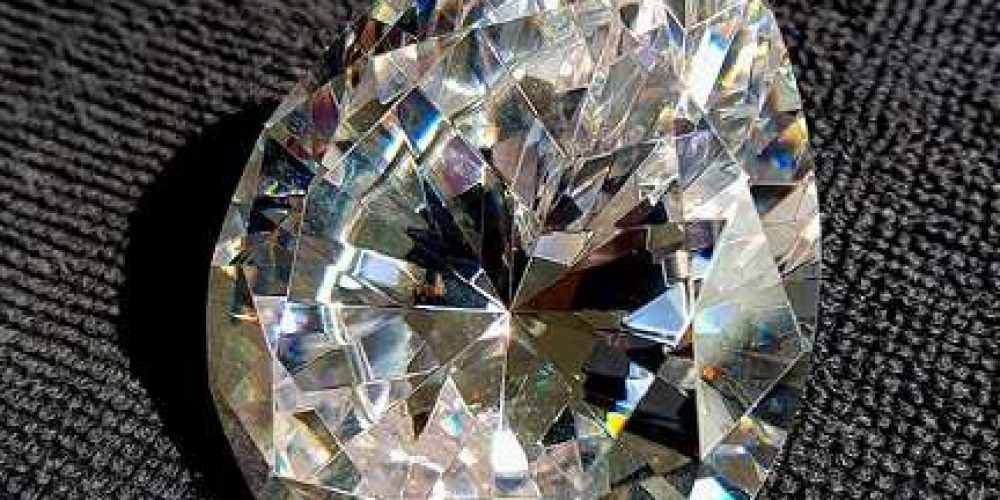
The Cullinan Diamond
Decoding Diamond Prices: From 2 Carat Diamond to 5 Carat Diamond
The trajectory of a diamond’s price parallels the rise in its carat weight, mirroring its increasing rarity and amplified visual impact. While we’ve unraveled the enchantment of the 1 carat diamond, let’s now embark on an exploration of other diamond sizes – the 2 carat diamond, 3 carat diamond, 4 carat diamond, and the opulent pinnacle represented by the 5 carat diamond.
This journey will unveil the intriguing variations in pricing and the intricate factors underlying them:
2 Carat Diamond Price
The allure of a 2 carat diamond lies within its harmonious fusion of size and affordability. The pricing spectrum is shaped by factors encompassing cut, color, and clarity. Thus, it’s essential to grasp these nuances before delving into a purchase, ensuring an informed and rewarding choice.
3 Carat Diamond Price
Stepping into the realm of a 3 carat diamond reveals a realm of luxury, accompanied by a corresponding price reflecting its scarcity. The intricate factors of cut and clarity hold substantial sway over the price tag, and potential buyers are advised to obtain a comprehensive diamond grading report for transparency and confidence.
4 Carat Diamond Price
The majestic aura of a 4 carat diamond is accompanied by a heftier price tag. This size demands a meticulous cut and unparalleled quality to bring forth its most captivating traits, justifying the investment for those seeking a truly extraordinary gem.
5 Carat Diamond Price
Finally, a 5 carat diamond stands as a testament to opulence and prestige. Among the rarest sizes, its price is not solely determined by its attributes but also significantly influenced by the dynamics of market demand. The pinnacle of luxury, a 5 carat diamond is a statement of unparalleled elegance.
As we navigate through these different diamond carat weights, we gain a deeper appreciation for the symphony of factors that orchestrate a diamond’s pricing. From size and rarity to cut and market dynamics, each element contributes to the intricate tapestry that defines a diamond’s worth and allure.
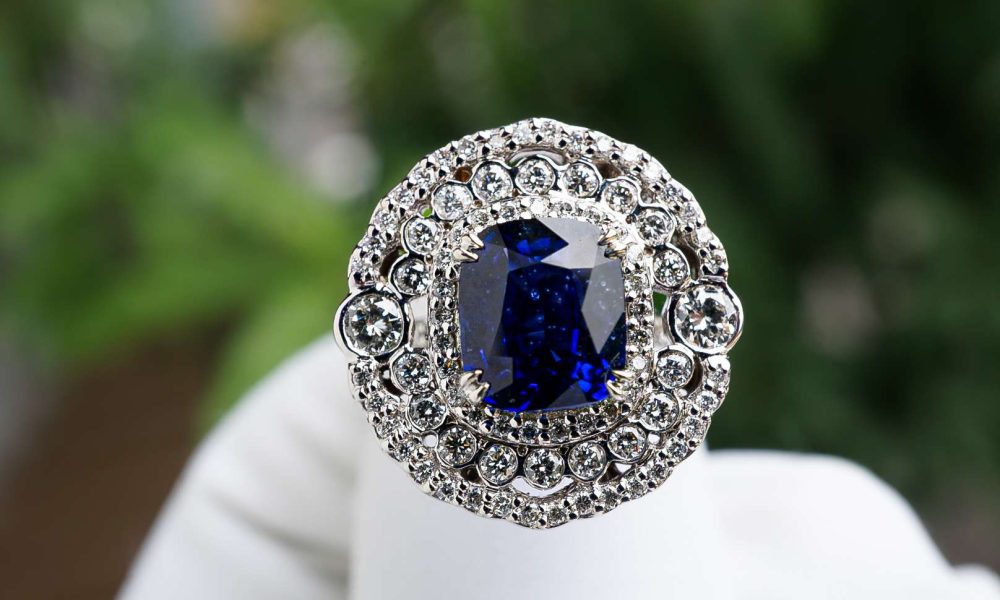
Cushion Cut Engagement Ring
Final Thoughts: The Brilliance of Diamond Carat
In the enchanting world of diamonds, carat weight reigns supreme as a defining factor, shaping a gem’s size, value, and mesmerizing allure. This element holds the power to transform the narrative of each diamond, from the enchantment of a delicate 1 carat diamond to the awe-inspiring charisma exuded by the biggest diamond in the world.
Every diamond carat weight carries a unique story, etched into the very essence of the gem itself. As you set foot into the captivating realm of diamond purchasing, it’s essential to recognize that while diamond carat weight is significant, it’s just one facet of a much larger puzzle.
Grasping the delicate dance between diamond carat weight and other critical aspects such as cut, color, clarity, and market dynamics allows you to navigate the choices with confidence. By unraveling this intricate interplay, you can make decisions that beautifully resonate with your desires and preferences.
Imagine being drawn towards the timeless elegance of a 2 carat diamond, where size meets affordability in perfect harmony. Or perhaps, the allure of the ultimate opulence embodied by a stunning 5 carat diamond calls to you.
Regardless of your preferences, the brilliance of diamond carat illuminates every step of your diamond journey. This brilliance transcends mere measurements; it encompasses the symphony of elements that together craft the enchanting story of each diamond, ensuring that your chosen gem resonates with your heart’s desires.
FAQs About Diamond Carat
Feel free to explore these questions to gain a deeper understanding of diamond carat and make informed decisions when selecting the perfect diamond for your needs and desires.
Diamond carat is a unit of measurement that determines a gem's weight. It's equivalent to 200 milligrams and plays a pivotal role in assessing a diamond's size and value.
Carat weight significantly influences a diamond's value. As carat increases, rarity and visual impact rise, affecting the gem's overall price.
Absolutely. Smaller carat weights exude delicacy, while larger ones evoke opulence. Each weight carries a distinct emotional appeal.
Diamond prices vary due to rarity – larger carat weights are scarcer. Demand also impacts prices, contributing to the fluctuations.
Carat is one of the 4Cs, along with cut, color, and clarity, that defines a diamond's worth. The interaction of these factors shapes a diamond's overall appeal and value.
Diamond carat weight indicates the gem's mass, size, and value. It's a fundamental factor in understanding a diamond's visual impact and pricing.
Not necessarily. While larger carat weights can be impressive, other factors like cut, color, and clarity also influence a diamond's beauty and value.
Consider personal preferences, budget, and lifestyle. A balance between size and quality ensures a diamond that suits your style and stands the test of time.
No, carat weight doesn't directly impact a diamond's durability. It's more related to cut and clarity. However, larger stones might be more prone to accidental damage.
No, diamond prices increase exponentially with carat weight due to rarity and demand. Larger stones are scarcer and, therefore, can have higher price per carat.

